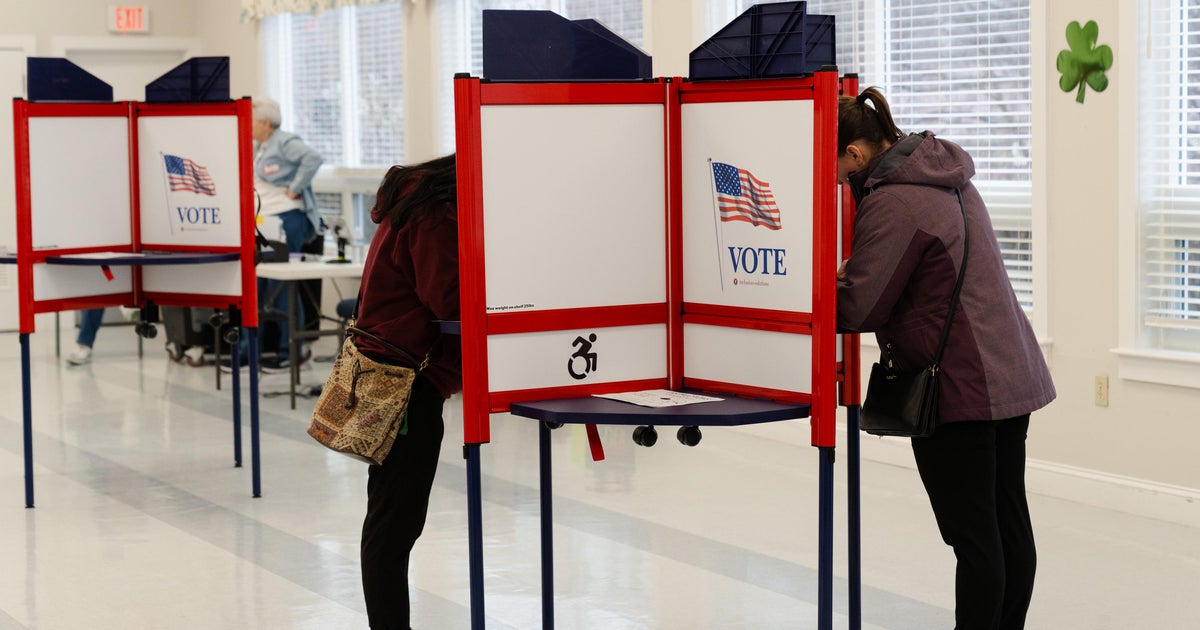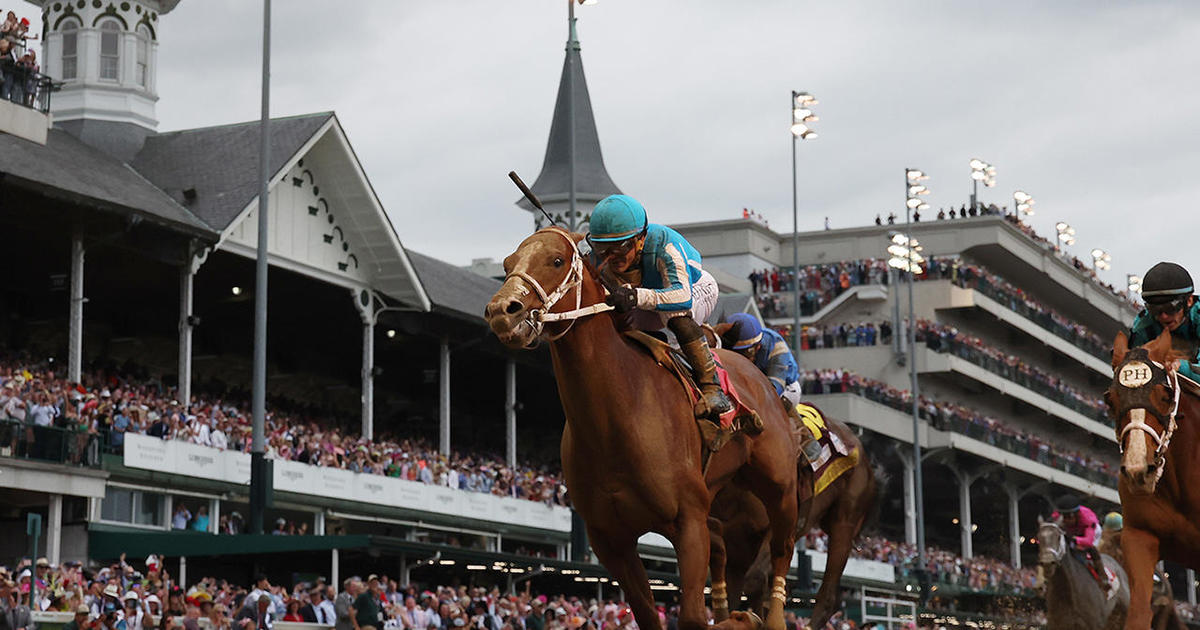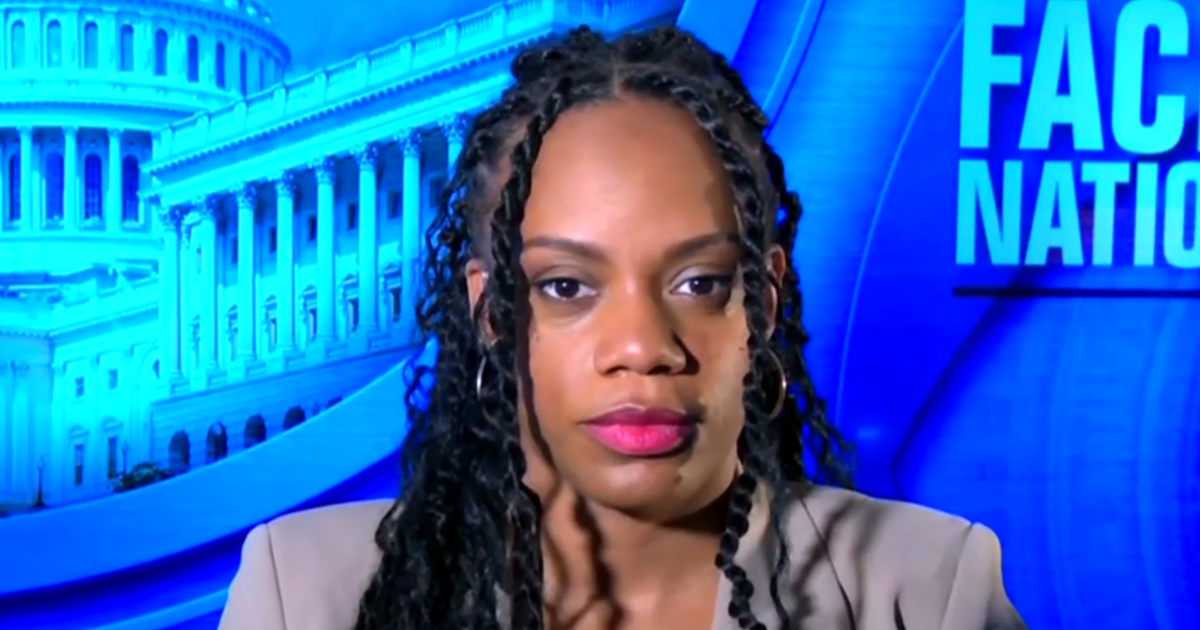From a SNAP recipient to Trump: Food box is a "terrible idea"
Larry Jackson, a 48 year-old father of three in Las Vegas, wants President Donald Trump to know that his proposal to cut and replace food stamps with a home-delivered food box is a "terrible idea."
"I'm a hard worker, trying to raise three children as a single father and one of my children is disabled," said Jackson, who has been a beneficiary of the Supplemental Nutrition Assistance Program (SNAP) for a year and a half. "What they want to do will provide no benefit in no kind of way. He's taking away options from the parents who know how to provide best for their children. SNAP -- as we receive it now -- it helps a whole lot more than what he is proposing."
SNAP benefits, commonly called food stamps, provide nutrition assistance that enables beneficiaries to buy food for their families. Under the proposal revealed in President Trump's 2019 budget request, recipients would lose autonomy over their food purchases. And the so-called "Harvest Box" program would save $129 billion over the next ten years. Overall, the White House has proposed a $213 billion cut to SNAP. That 30-percent cut would cause at least 4 million people to lose access to the program, according to a projection by the Center on Budget and Policy Priorities.
"A person who is rich don't understand what a poor person goes through and what they have to do to survive," Jackson told CBS News. He said his grocery shopping routine that not only allows him to tailor his shopping to his children's needs, but provides a little bit of a better life for his family as he strings together odd jobs around Las Vegas.
- Washington eyes welfare reform, but it's entitlement spending that looms large
- What will become of welfare under Trump?
For households that receive over $90 dollars a month in SNAP assistance, Mr. Trump's proposal would provide a portion of their benefits in the form of a delivery food box from the Department of Agriculture (USDA). According to the a statement from the USDA, "America's Harvest Box" would contain foods like "shelf-stable milk, juice, grains, ready-eat- cereals, pasta, peanut butter, beans, canned meat, poultry or fish, and canned fruits and vegetables." It would not contain fresh fruit or vegetables.
Budget Director Mick Mulvaney likened the model to a "Blue Apron-type program" for those living in poverty. Blue Apron is a delivery food box program that costs $10.00 per serving and offers 30-minute recipes created with fresh ingredients.
"I don't want to steal somebody's copyright -- but a Blue Apron-type program where you actually receive the food instead of receive the cash," Mulvaney said at a briefing at the White House on Monday.
The remainder of a recipient's benefits would be transferred on to an Electronic Benefit Transfer card that can be used at approved grocery stores, the way the current version of SNAP works. The changes could affect 16.4 million households, according to the USDA. Importantly, states would ultimately be left to administer and pay for the costs around the program.
Three Square food bank in Las Vegas, from which Jackson sometimes receives food to supplement his SNAP benefits, feeds 164,000 people every month. According to Jodi Tyson, the head of government affairs at Three Square, there are 270,000 people overall who are "food insecure" in the Clark County area. SNAP, she said, helps account for the 100,000 people whom they are not able to reach with their food parcels.
"That's the beauty of SNAP," Tyson told CBS News. "You can go when you need. In Las Vegas, our grocery stores are open 24 hours. If you work the night shift and your only time to get the food is in the middle of the night, our grocery stores are open for you."
Even more children are living in food insecure households today than they were in the years leading up to the Great Depression. In 2014, one in seven households had trouble providing food to all members of their families, according to a 2016 report by the Hamilton Project.
"There is a huge meal gap in our community and then when we think about cutting people's benefits – not just changing the structure – we get very nervous," Tyson added.
Mulvaney and Agriculture Secretary Sonny Perdue both referred to the proposal as a multipurpose, "innovative" approach that provides "nutritious food" to people, eliminates fraud, and promotes Trump's "Buy American" push. But Tyson and others argue that SNAP is already one of the most effective government programs in existence.
"SNAP is most successful government program we have today," said Craig Gundersun, a professor of agriculture and economics at the University of Illinois who has studied SNAP for the past twenty years. "It sets out to reduce hunger in the U.S. and does extraordinarily well at it. The main reason it does well is that it gives families the autonomy and dignity to pick out SNAP budgets. This is a patronizing and condescending idea. It's hard enough being poor but this will make it harder."
The program accomplishes what it sets out to do: recipients of SNAP report less food insecurity. Ninety-seven percent of SNAP benefits are redeemed by the end of the month of issuance, according to the non-profit Food Research and Action Center (FRAC). In 2016 alone, the Census Bureau's Supplemental Poverty measure credits SNAP with lifting 3.6 million Americans out of poverty.
"SNAP is nearly as effective as the Earned Income Tax Credit in lifting families above the poverty line, and far more effective than any other program in lifting families out of deep poverty," according to FRAC.
SNAP recipients have also demonstrated positive health and economic outcomes. Those who receive it early in life have improved high school graduation rates and adult earnings and health, and it provides an economic stimulus to the local economy, according to the USDA.
The proposal would require approval from a Congress that has historically offered generous bipartisan support to the program.
Mr. Trump himself has repeatedly painted SNAP recipients as frauds taking advantage of the system at the expense of others, said Mark Tanner, a senior fellow at the CATO Institute.
"This is basic Trumpism," said Mark Tanner, a senior fellow at the CATO Institute, a libertarian think tank. "A combination of contempt for the poor combined with 'Make America Great Again' corporate welfare."
"It's hard to find a redeeming feature -- it's remarkably paternalistic and demeaning to the poor," he said.
The logistics befuddled critics.
"Will they all be getting the same basket?," asked Gunderson. "No one has proposed this because it's just a ridiculous idea if you think about it from a logistics standpoint."
USDA spokesperson Jake Wilkins wrote in an email that it seemed that "many reporters do not understand the proposal we have offered," and pointed out that Mulvaney never explicitly stated that America's Harvest box has to be delivered. Transportation logistics will be decided by individual states.
"We do not expect what may work well in Nebraska to work well in New York," Wilkins wrote.
"What is in the boxes is also left largely up to the states. We would of course account for religious and dietary restrictions. While USDA would likely issue guidance and requirements, what is abundant and available in Hawaii would be very different than West Virginia," he added.



